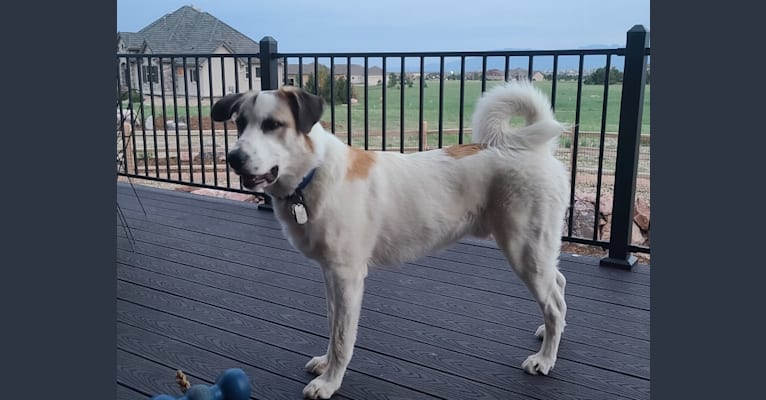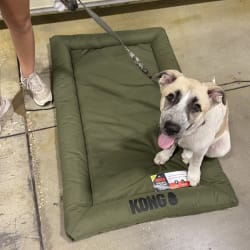“Casper was the runt of a litter of 9 that were born in Texas. They were taken in by a local Texas Pyrenees rescue and then brought up to the Peyton rescue when they were about 4-5 weeks old. He only weighed 2.5# when he got to Colorado. He is an absolute wild child - into anything and everything. Loves everyone he meets and wants to play with any dog he meets. His best friend is a 120# Pyrenees owned by the owners of the Peyton Rescue!”
Place of Birth
Texas, USA
Current Location
Colorado Springs, Colorado, USA
From
Great Pyrenees Rescue And Sanctuary, Bradshaw Road, Peyton, CO, USA
This dog has been viewed and been given 3 wags
Genetic Breed Result
Casper
Mixed Ancestry
53.5% Great Pyrenees
27.6% German Shepherd Dog
9.0% Komondor
9.9% Supermutt
Embark Supermutt analysis
What’s in that Supermutt? There may be small amounts of DNA from these distant ancestors:
Great Pyrenees
The Great Pyrenees is an exceptionally loving dog whose primary function is to protect sheep, goats, livestock, people, children, grass, flowers, the moon, lawn furniture, etc., from any real or imaginary predators that may intrude on your personal space. They have a strong build and an amazing thick white coat that exudes elegance and majesty. They make a great family dog because of their intelligence and steady temperament.
Learn More
German Shepherd Dog
German Shepherds are confident, courageous dogs with a keen sense of smell and notable intelligence. These are active working dogs who excel at many canine sports and tasks -- they are true utility dogs! Their versatility combined with their loyal companionship has them consistently listed as one of the most popular breeds in the United States.
Learn More
Komondor
The Komondor (in Hungarian, the plural form of komondor is komondorok), also known as the Hungarian sheepdog, is a large, white-colored Hungarian breed of livestock guardian dog with a long, corded coat.
Learn More
Start a conversation! Message this dog’s humans.
Genetic stats
Dogs Like Casper

Discover dogs who share a similar breed mix to Casper. A higher score means the two dogs have more of their breed mix in common. A score of 100% means they share the exact same breed mix!
Click or tap on a pic to learn more about each dog and see an in-depth comparison of their DNA, breeds, and more.
































































